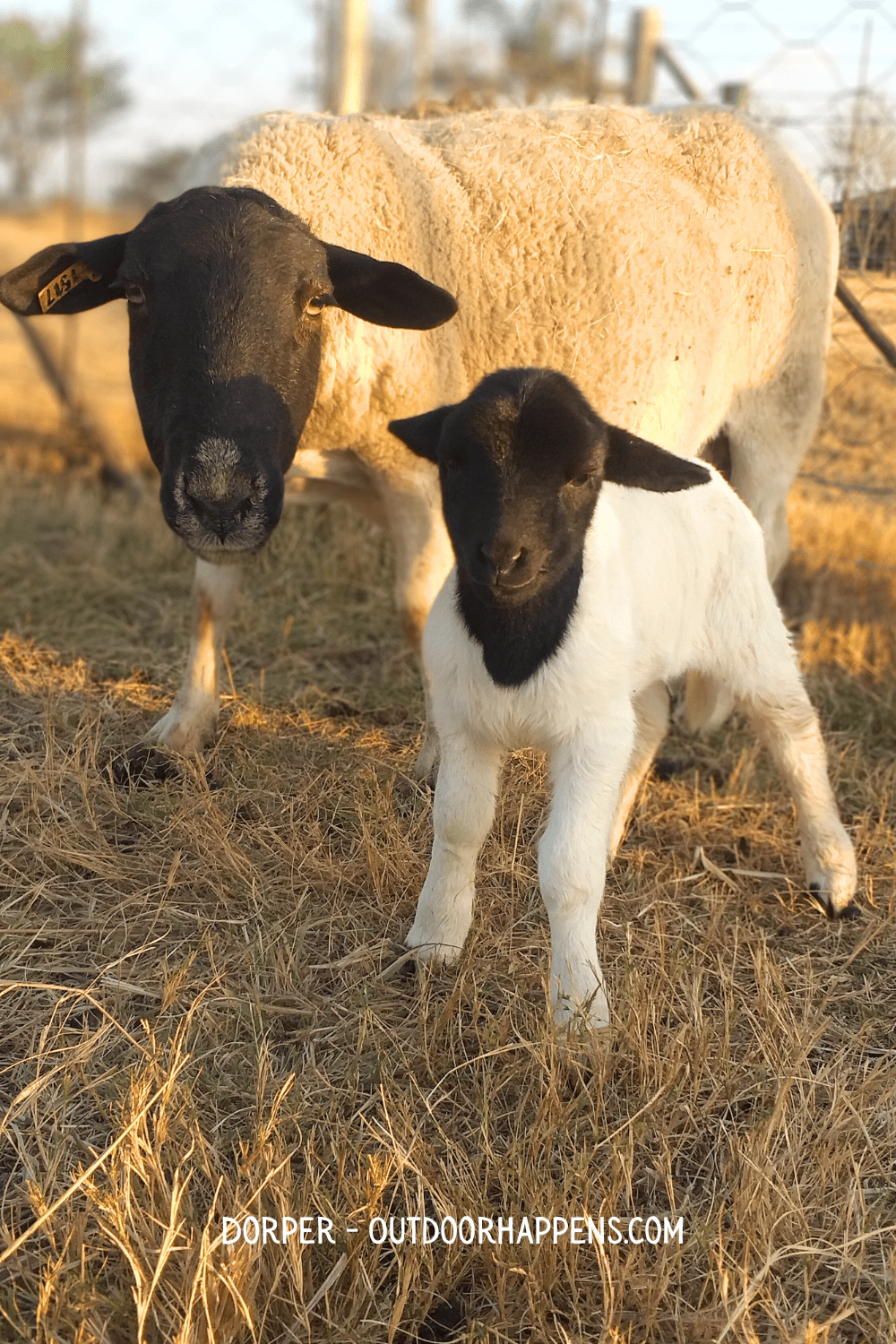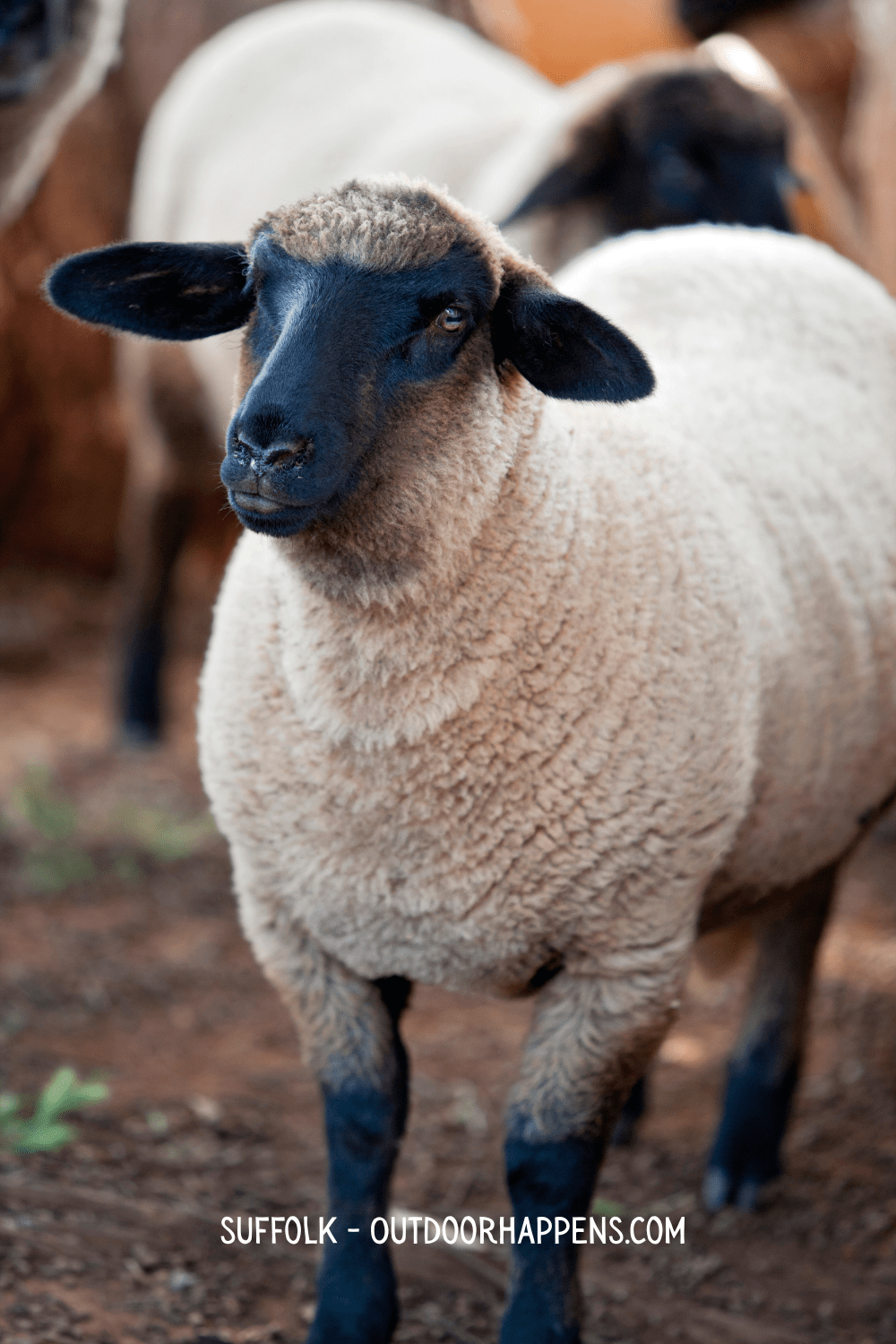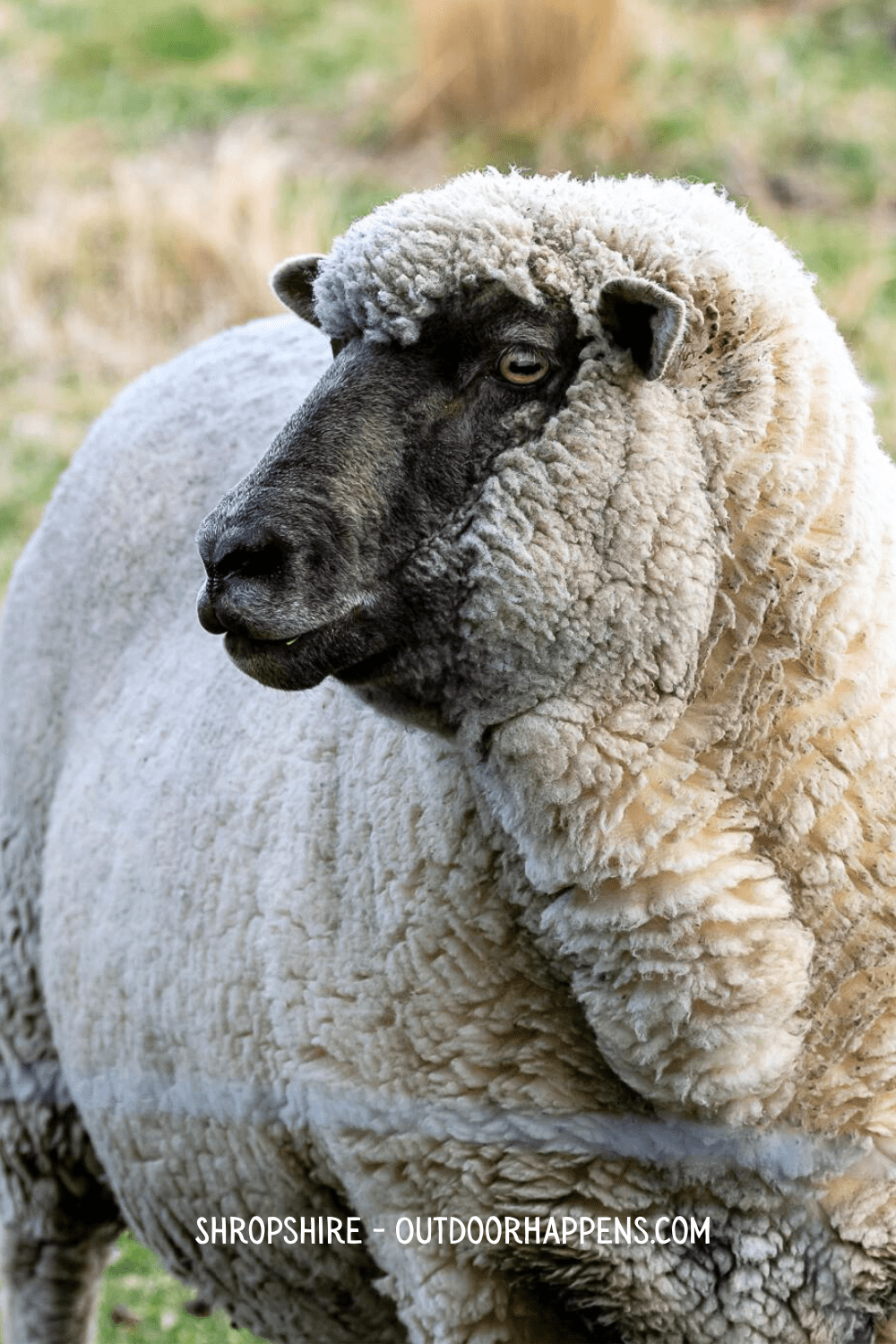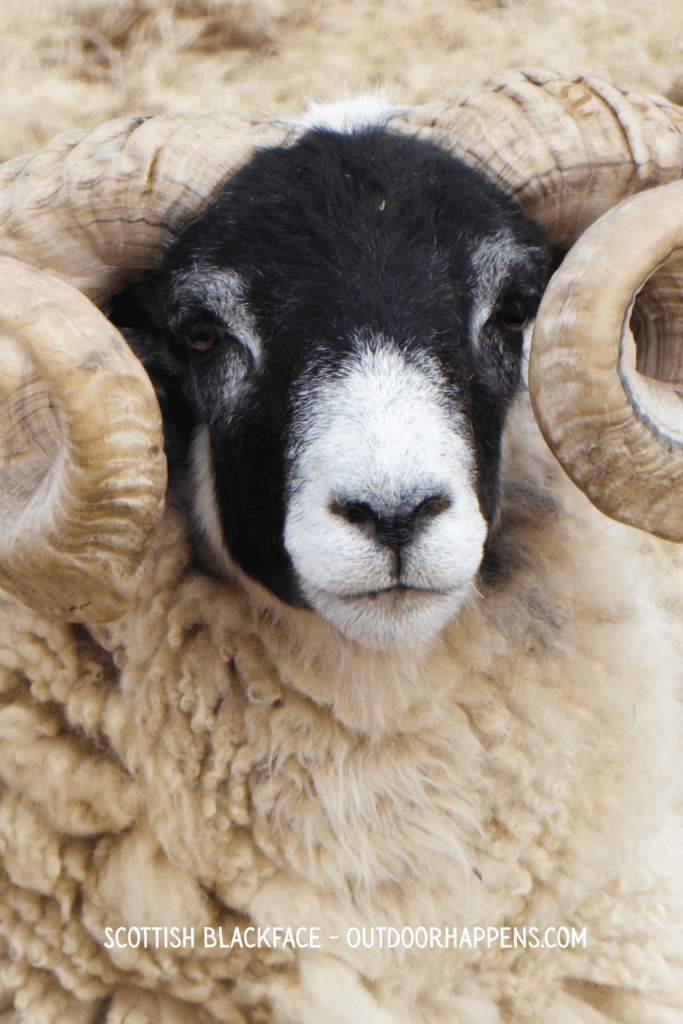11 Delightful Sheep With Black Faces [The Cutest Sheep Contest!]
Welcome! This article contains affiliate links, meaning I get a commission if you decide to make a purchase through my links, at no extra cost to you.
Sheep with black faces are so adorable! If you’ve ever thought about adding some black-faced sheep to your new flock, we’ve got all the top breeds of sheep with black faces right here for you.
But why do some of us prefer sheep with black faces? Well, it is not just for aesthetic reasons! Some of the most famous sheep breeds with black faces are popular because they are productive breeding stock.
On the other hand, some black-faced sheep are not ideal for breeding meat lambs, but they make adorable pets, perfect if you want something to keep the grass trimmed on a small homestead.

Top Breeds of Sheep With Black Faces
Whether you’re looking for new breeding stock, a pair of self-driven grass cutters, or just a pet sheep, here are some of the most famous sheep breeds with black faces to browse.
Let’s also discuss the cutest sheep with black faces in more detail.
(We also have endless black face sheep photos and videos to share!)
1. Valais Blacknose Sheep

The Valais Blacknose sheep is quite possibly one of the cutest sheep breeds I have ever seen.
These distinctive little sheep have black covering the nose, ears, and eyes. Above this, the top of the head is white, giving the appearance of a sheep wearing a fluffy beanie hat! Originating from the Valais region of Switzerland, this is an ancient breed that is hardy and good for grazing rocky, rough ground.
| Key Features of Valais Blacknose Sheep | |
|---|---|
| Purpose | Dual purpose, reared for both meat and wool |
| Temperament | Calm and docile, easy to tame and handle |
| Lambing capabilities | An easy-lambing breed that can lamb twice in one year |
| Preferred climate | Hardy, ideal for grazing on rough, rocky ground in cooler climates |
| Breed society | Valais Blacknose Society |
Raising goats is a ton of fun. But it's also a handful! So we're sharing this goat-raising course by Kristin Duke. Kristin wants to show you how to choose the best possible goat breed for your homestead or farm. You'll also discover the most critical goat supplies, feed, and fencing options. Kristin also shares plenty of maintenance tips for raising happy and healthy goats.
2. Dorper Sheep

The Dorper sheep doesn’t win any marks for cuteness, but it is a majestic and regal black-faced sheep with many advantages that make it attractive to homesteaders!
Developed by mating Dorset horn and Blackhead Persian sheep, these muscular ovines have a high output level for minimal input. They can survive on poor-quality grazing. And unlike many other sheep breeds, they will eat bushes and weeds. And grass!
| Key Features of Dorper Sheep | |
|---|---|
| Purpose | Prized for good-quality lean meat production |
| Temperament | Calm but not particularly sociable towards humans |
| Lambing capabilities | Highly fertile and can lamb three times in two years |
| Preferred climate | Able to thrive in warm and cool climates on arid, sparse grazing |
| Breed society | American Dorper Sheep Breeders Society |

Read More – Best Animals for Small Farms and Homesteads!
3. Suffolk Sheep

The Suffolk sheep breed originates from England and is now one of the most well-known sheep breeds in the western world. These sheep are famous for their distinctive black head and legs. They also sport a noble appearance. They are muscular and strong, and the fast-growing lambs get commonly bred for meat.
| Key Features of Suffolk Sheep | |
|---|---|
| Purpose | Fast-growing meat lambs |
| Temperament | Calm and sensible, although not particularly friendly |
| Lambing capabilities | An easy-lambing breed that often has twins or triplets |
| Preferred climate | Able to thrive in a variety of climates but do best on good quality grazing |
| Breed society | Suffolk Sheep Society |
4. Hampshire Sheep

The Hampshire sheep, or Hampshire Down, is another English sheep breed. They have black wool on the nose, ears, and around the eyes, and the rest of the face is white.
The lambs of the Hampshire sheep are utterly adorable! They look just like a stuffed toy lamb!
| Key Features of Hampshire Sheep | |
|---|---|
| Purpose | Reared for both lamb meat and prime-quality mutton |
| Temperament | Docile and good-natured |
| Lambing capabilities | Easy to lamb, normally produces a single lamb |
| Preferred climate | Hardy and tough, able to adapt to many climates |
| Breed society | Hampshire Down Sheep Breeders Association |
5. Shropshire Sheep

Shropshire sheep are similar to the Hampshire Down in appearance but are smaller and more refined. The black wool on the nose extends to just below the eyes, and the ears are also black. Shropshire sheep get commonly reared for meat.
| Key Features of Shropshire Sheep | |
|---|---|
| Purpose | Dual-purpose, reared for both wool and meat |
| Temperament | Calm and gentle |
| Lambing capabilities | Easy to lamb, most commonly giving birth to twins |
| Preferred climate | Ideal for grazing woodland pasture |
| Breed society | Shropshire Sheep Breeders Association |
Read More – Raising Sheep Vs. Goats. What’s the Difference?!
6. Black Welsh Mountain Sheep

Black Welsh Mountain sheep are an ancient breed of sheep. They date back to the middle ages. This distinctive sheep has a dense wooly brown coat but is bald on the legs and face. The face is jet black and very elegant.
The wool of the Black Welsh Mountain sheep is highly sought after, as it is uniform in color and very durable. Their wool’s lush and uniform appearance makes it very versatile. The Black Welsh wool gets used by hand spinners to make hardwearing woolen clothing.
| Key Features of Black Welsh Mountain Sheep | |
|---|---|
| Purpose | High-quality wool, sought after by hand spinners |
| Temperament | Hardy and self-reliant, may struggle to bond with humans |
| Lambing capabilities | Will normally lamb outdoors without any assistance |
| Preferred climate | A tough hillside sheep that will thrive in harsh climates |
| Breed society | Black Welsh Mountain Sheep Breeders Association |
7. Karakul Sheep
Karakul sheep are used primarily for wool production, thanks to their thick double coat. They are a rare breed, and their history can be dated back to around 1400 B.C.
Fun fact! Karakul sheep are a desert breed. They can store nourishment in their thick tails – like how a camel uses its hump!
| Key Features of Karakul Sheep | |
|---|---|
| Purpose | Wool and lambskin production |
| Temperament | Independent and low-maintenance |
| Lambing capabilities | Excellent mothers with a high survival rate of offspring |
| Preferred climate | Can cope with extreme heat or cold but not excessive rain |
| Breed society | Karakul Shepherds Alliance |
8. Romanov Sheep
Romanov sheep are born with entirely black coats. But over time, they shed their hair and become lighter. As an adult, this Russian breed of sheep has a characteristic steel grey coat and black face.
| Key Features of Romanov Sheep | |
|---|---|
| Purpose | Primarily raised for meat, although the wool is becoming more popular |
| Temperament | Alert and flighty, not ideal as a family pet |
| Lambing capabilities | Easy to lamb and can produce up to six lambs at a time! |
| Preferred climate | Adapted to cooler inland climates |
| Breed society | North American Romanov Sheep Association |
9. Scottish Blackface Sheep

Blackies have an iconic black and white patterned face and are one of the most beloved black-faced sheep breeds. Anywhere! These sheep originate from the harsh Scottish Highlands, and their long, dense wooly coat can withstand even the most inclement weather!
| Key Features of Scottish Blackface Sheep | |
|---|---|
| Purpose | Produces coarse wool which is ideal for making tweed and carpets |
| Temperament | Docile and easy to handle |
| Lambing capabilities | Easy to lamb with minimal assistance required |
| Preferred climate | Can tolerate most climates, including rugged hillsides and rocky ground |
| Breed society | The Blackface Sheep Breeders Association |

10. Clun Forest Sheep

Clun Forest sheep have a white body with a dense, short wooly coat. You’ll also notice their black, wool-free face. Although once very rare, this breed is increasing in popularity! Their newfound popularity is thanks to their versatility as a milk ewe and breeding stock.
| Key Features of Clun Forest Sheep | |
|---|---|
| Purpose | Multi-purpose – kept for meat, wool, and milk |
| Temperament | Alert and active, but good-natured and easy to handle |
| Lambing capabilities | Easy to lamb, consistently produce twins |
| Preferred climate | Upland or sparse grazing |
| Breed society | North American Clun Forest Association |
11. Zwartbles Sheep

The Zwartbles sheep breed has a face like no other! They’re one of the only black-faced sheep breeds to have a characteristic white stripe, or blaze, down the center of the face. They also commonly have white on the lower legs, called socks, and a white tail tip.
| Key Features of Zwartbles Sheep | |
|---|---|
| Purpose | Production of milk as well as lamb meat and mutton |
| Temperament | Docile and friendly |
| Lambing capabilities | Can raise triplets with ease |
| Preferred climate | Suited to cold, wet climates |
| Breed society | Zwartbles Sheep Association |

Read More – 7 Reasons for Raising Oberhasli Goats!
Sheep With Black Faces FAQ
The numbers of Valais Blacknose sheep are relatively low, estimated to be below 19,000 worldwide. They get categorized as a rare heritage breed of sheep.
They are relatively uncommon outside of their home country, although breeding programs worldwide are being established.
Valais Blacknose sheep aren’t only in Switzerland! They can get found in the United Kingdom, Germany, and New Zealand. It can be tricky to find this rare heritage breed elsewhere. But extensive breeding programs are underway in the United States and other countries.
The Dorper was developed primarily as a mutton sheep. It is easy to breed and has a long reproductive life. They are also admired for their thick skin, which helps make sheepskin gloves.
The Dorper breed is a hair sheep. The term hair sheep means that it produces hair instead of wool. The coat of a hair sheep consists of a long coarse coat with a thick, soft undercoat.
All Dorper sheep will shed their hair coat. They do not need to get shorn. However, regular trimming will help to keep the sheep coat neat.
Katahdin sheep and Dorper get bred as meat sheep, prized for their high-quality mutton. Dorper sheep are often selected over Katahdin lambs as the meat tends to be leaner and more muscular.
If you are breeding from your Suffolk sheep, don’t be surprised if the lambs are black when they are born! Most Suffolk lambs are born black, and the body will turn white as the lamb ages.
Conclusion

As you can see, if you are looking for black-faced sheep breeds, you are spoilt for choice! Some of these sheep breeds are widely available worldwide, while others are rarer.
When selecting a breed of sheep, it is vital to double-check that it will thrive in your climate! Otherwise, you’ll be landing yourself with a whole lot of extra work and potential trouble.
(Nobody wants an anxious trouble-making sheep herd!)
What about you?
Let us know what your favorite black-faced sheep breed is! We’d love to hear all about them! (Bonus points if you have photos of black-face sheep you can share with us!)
Thanks again for reading.
Have a beautiful day!








This is a very nice article. A few points that would have made it a GREAT article: Most people don’t buy sheep just ’cause they’re cute:
1: What are each breed good for? (wool, meat, milk)? You mention in a few breeds, but not all.
2:Temperament? Are they very active and hard to work? Are they docile? Do they try to escape all the time (like goats), or are they content? PS: What is fecund?
3: How well do they lamb? In other words, do they often have difficulty in birth, or do they give birth easily?
And as you mention in closing:
4: Which type of climate do they require: cold, warm, a mix? Largely forest? largely pasture?
If these questions aren’t to be answered in your post, links to further education would be nice for ALL BREEDS listed.
Thank you for bringing these interesting breeds to light.
Thank you Carol!
We are going to update the article with all the information within the next two weeks!
Elle
Updated!
Thanks for the feedback once again!
😀
The Romanov is my favorite.
Dear Jennifer,
Thank you so much for sharing your favorite sheep breed with us!
The Romanov sheep are indeed fascinating creatures. Their distinctive double coat and exceptional prolificacy set them apart. These woolly wonders often surprise shepherds with their ability to produce multiple lambs per pregnancy, making them a true marvel in ovine genetics. 🐑
Thanks again for your contribution!
Warm regards,
Mike D